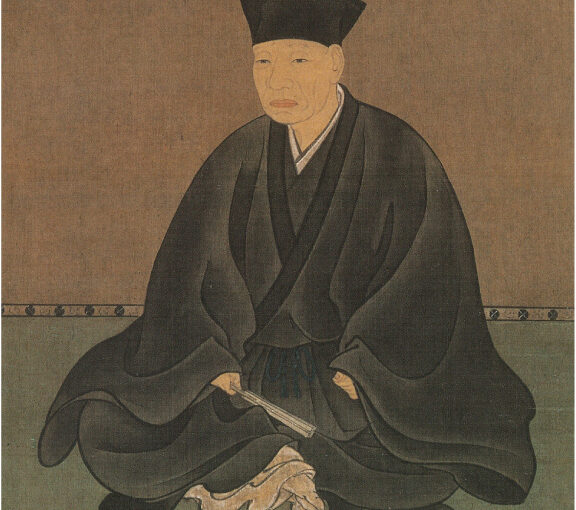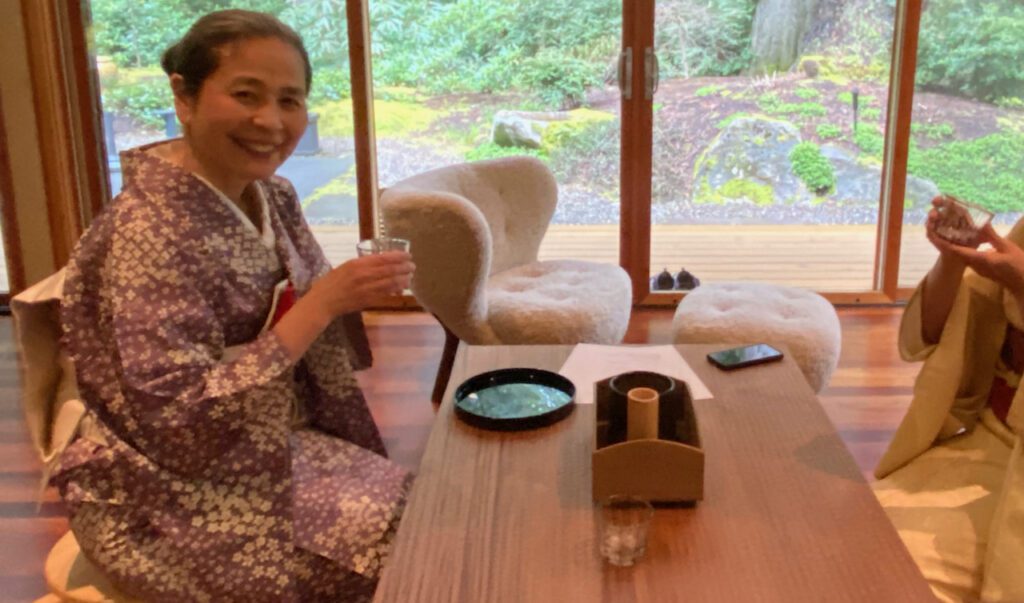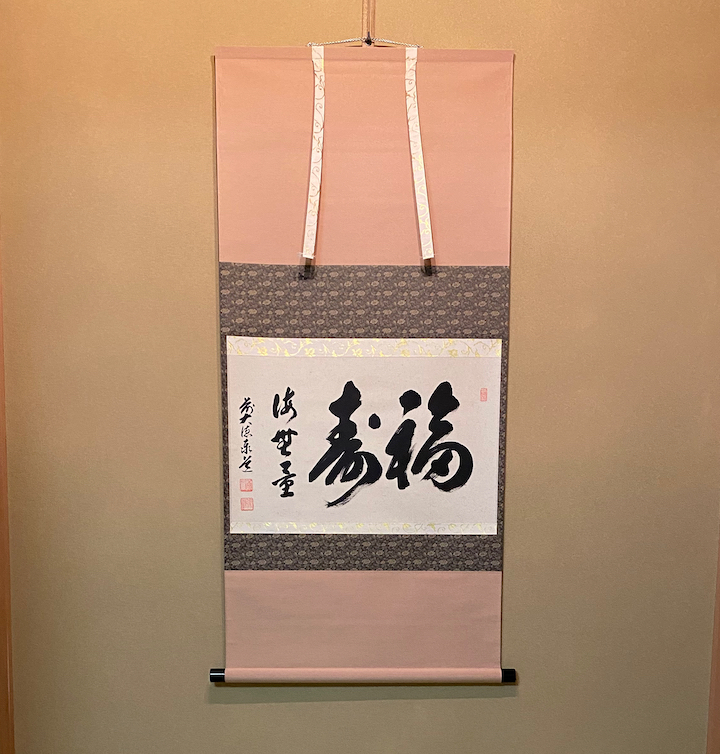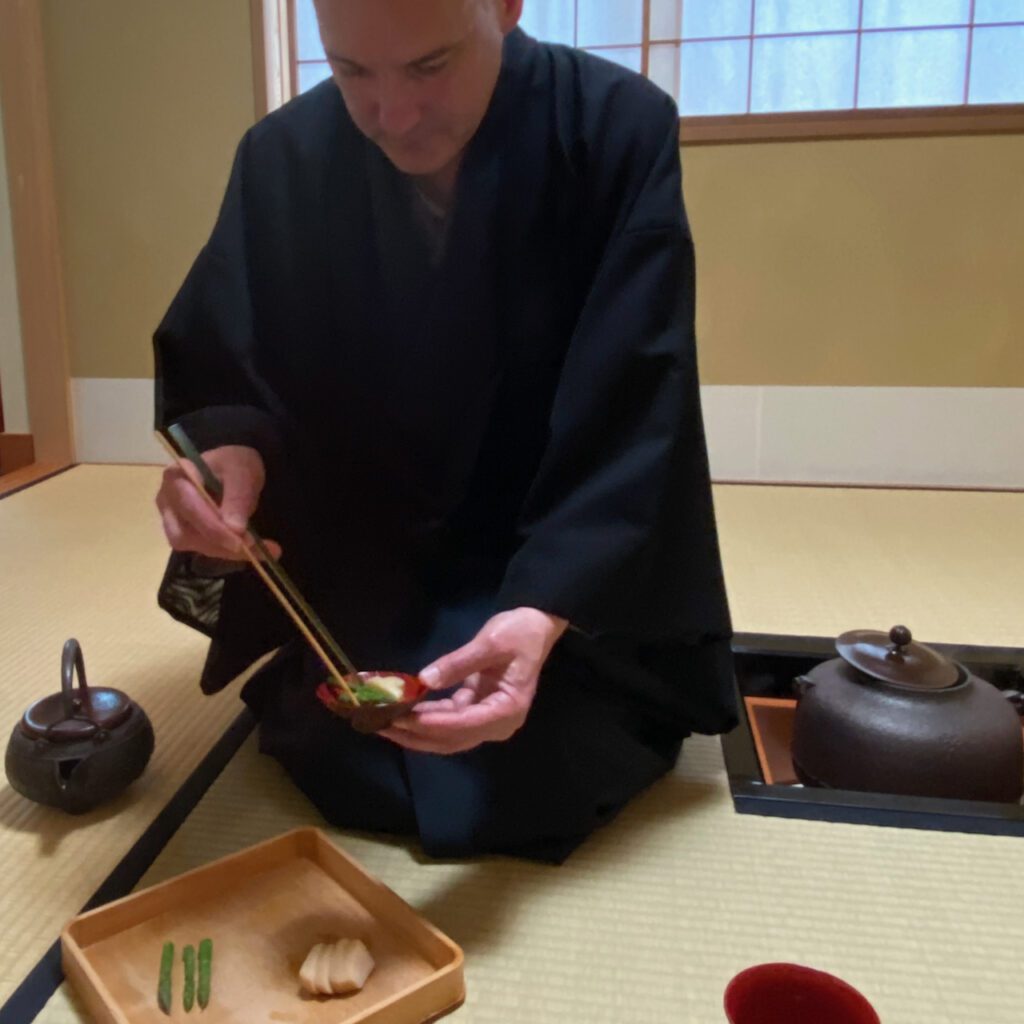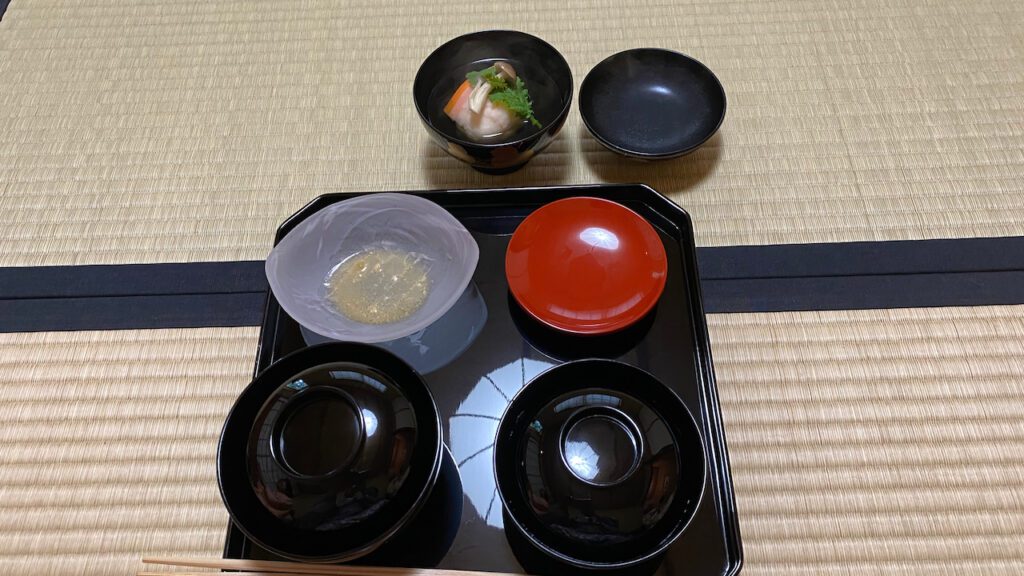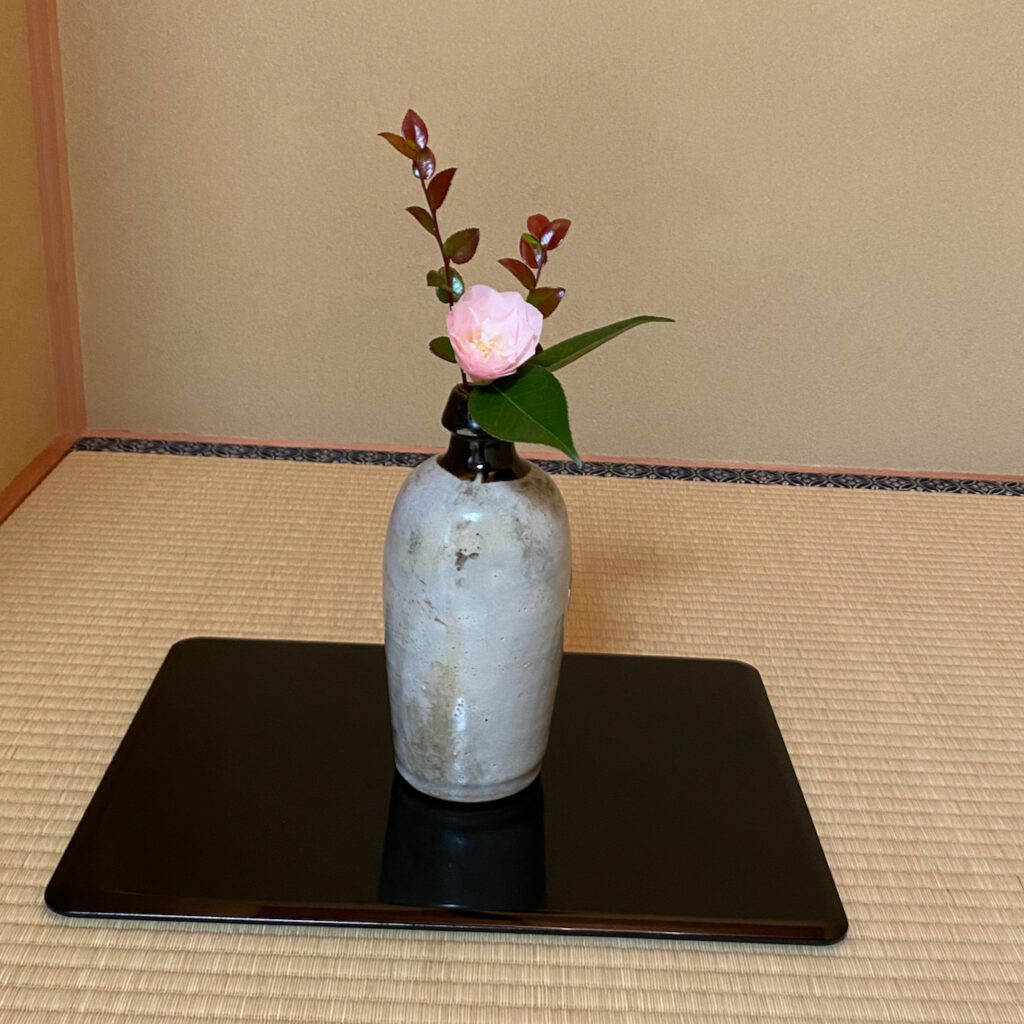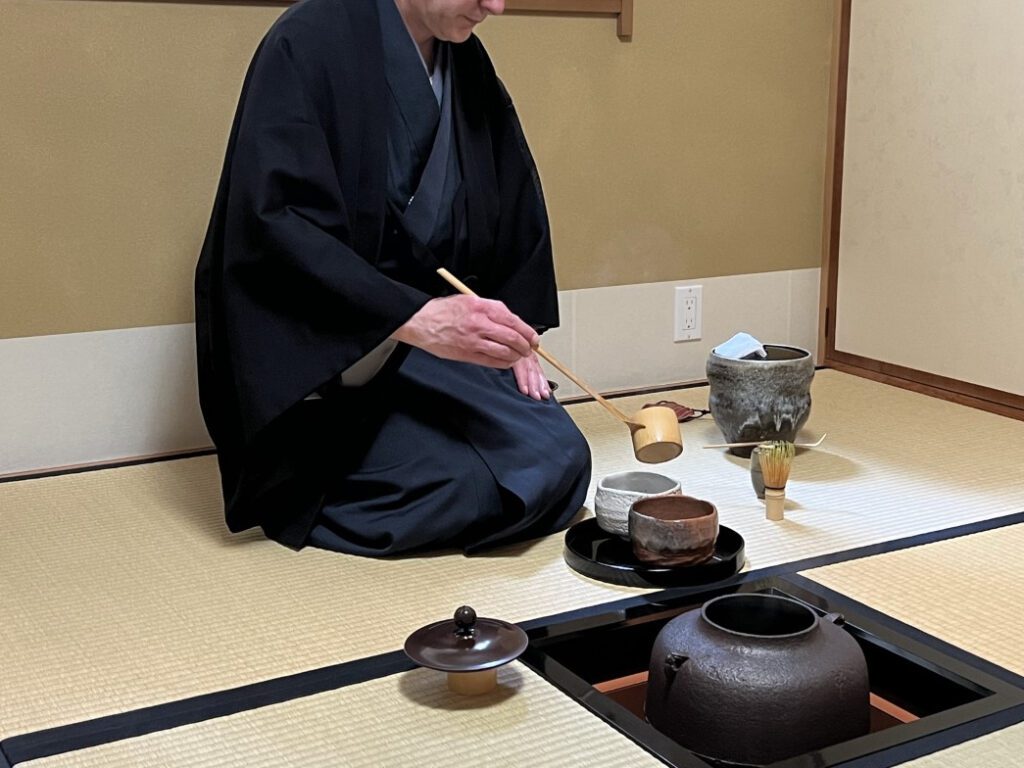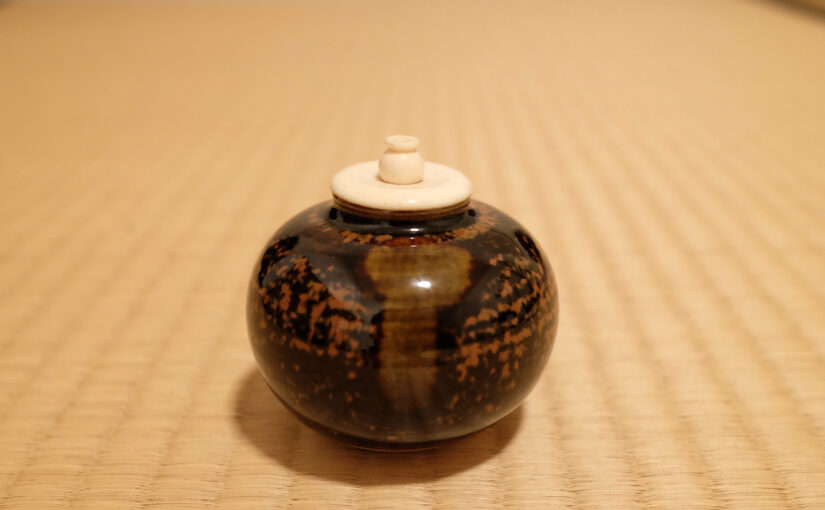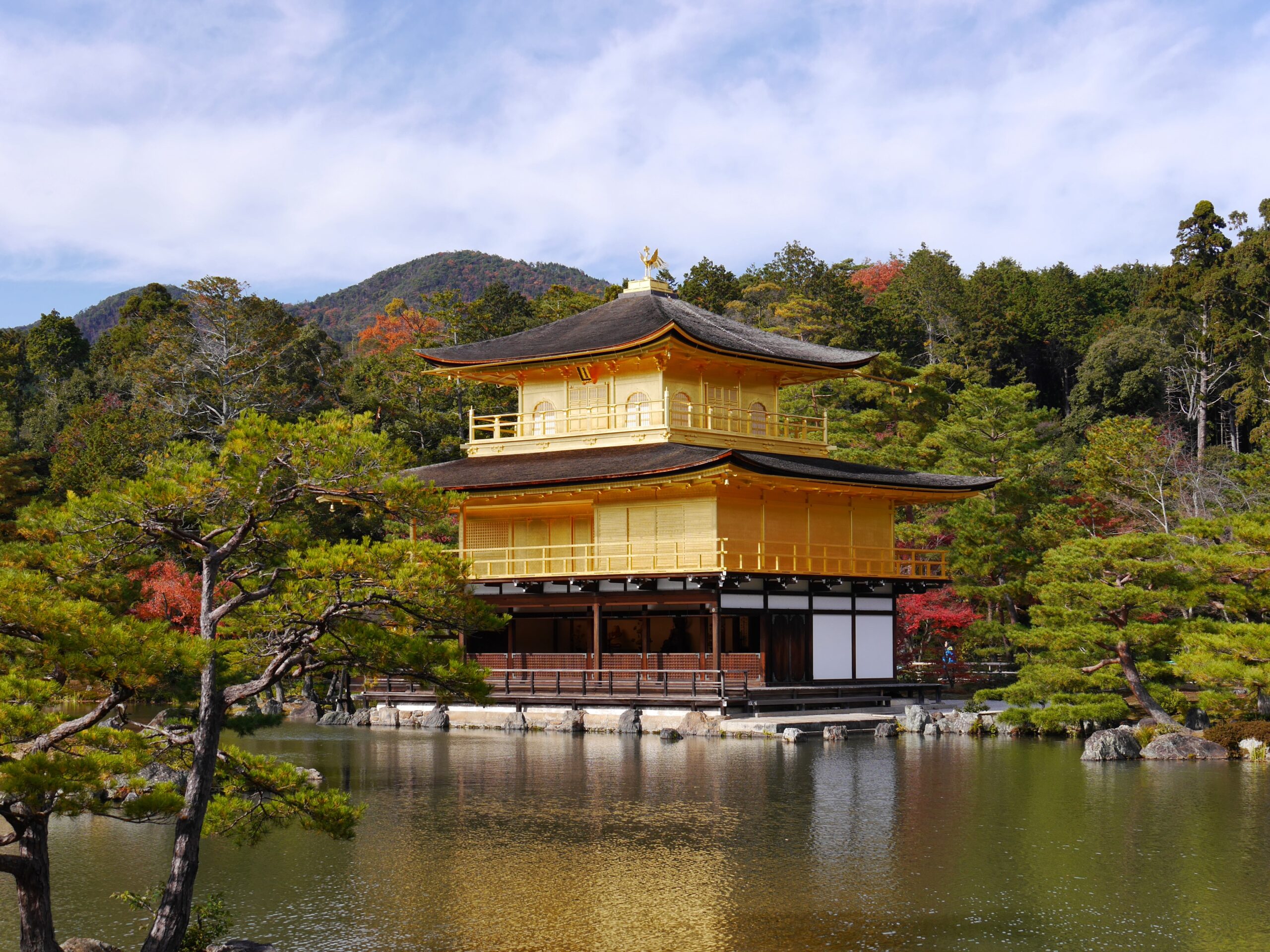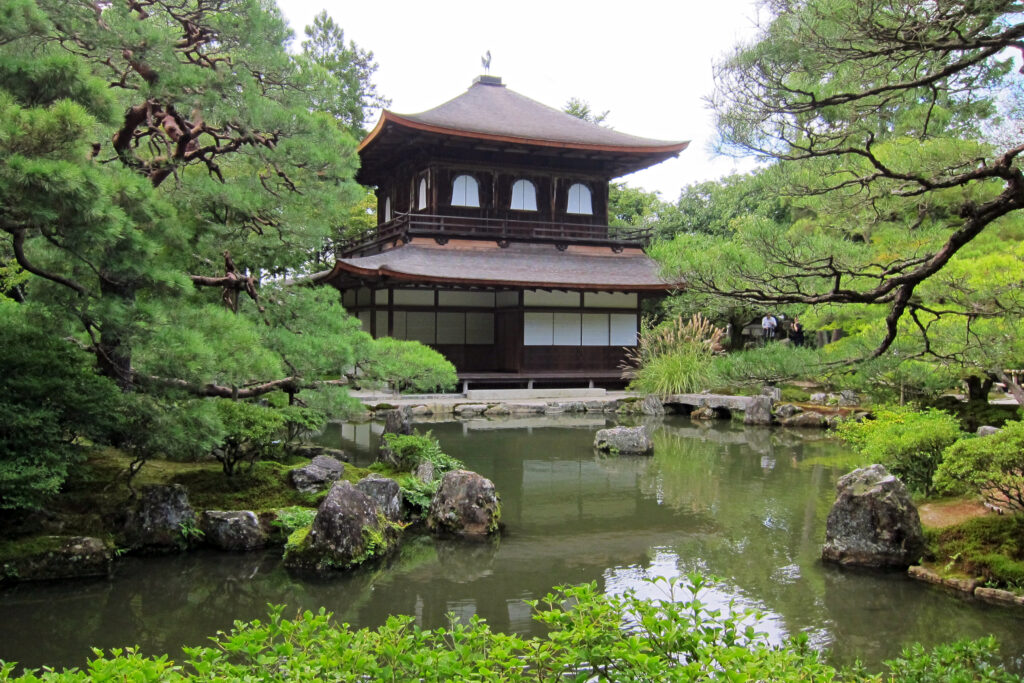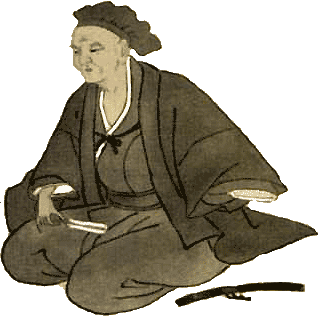(Image: Sen no Rikyu by Hasegawa Tohaku, Wikimedia)
Sen no Rikyu 千利休 (1522–1291), a person who can never be separated from Japan’s tea ceremony. What’s his contribution? Let’s see how his 15th-generation descendant describes him.
To recount his (Rikyu’s) personal history and the contributions he made to the practice of Tea would take volumes. Suffice it to say here that it is Rikyu’s organization and blending of the many styles of Tea practiced up to his time, along with their philosophy, procedures, and histories, that we today know as the Way of Tea.
Rikyu identified the spirit of the Way of Tea with four basic principles of harmony, respect, purity, and tranquility. These four principles underlie all the practical rules of Tea and represent at the same time its highest ideals.
“Tea Life, Tea Mind” – by Soshitsu Sen XV
Rikyu was one of the wealthy merchants in Sakai. There is no way of knowing if he was for or against surrendering to Oda Nobunaga, but Rikyu became one of the three main people responsible for conducting tea ceremonies for Nobunaga.
After Nobunaga was killed, Toyotomi Hideyoshi 豊臣秀吉(1536-1598), one of Nobunaga’s subordinate samurai, gained power. One story goes that Hideyoshi was overjoyed when Nobunaga granted him the right to conduct his own tea ceremony. Under Hideyoshi, Rikyu established himself as the tea master.
How much did Hideyoshi rely upon Rikyu for many critical decisions, not only regarding the tea ceremony but also politics? Why did Rikyu fall out of Hideyoshi’s favor? What was the real reason for Hideyoshi to order Rikyu to commit seppuku (death by hara-kiri)? There are so many books, movies and comics about Rikyu. But the mystery of his death has never been solved.
Why is Rikyu considered the pinnacle of the tea ceremony when there were many others practicing tea during his life?
Rikyu introduced and implemented numerous new concepts into tea ceremony, including:
- Smaller tearooms小間…. with two or three tatami mats
- Nijiriguchi躙口…. A tiny entrance that requires one to crawl into the tearoom
- Murodoko室床….A simpler, abbreviated alcove
I imagine Rikyu might have been an otaku (a Japanese word, similar to nerd or geek). His pursuit of simplicity and humbleness seems extreme. Maybe there was no such word as “compromise” in his dictionary.
Rikyu also intrigues me that he commissioned a roof tile maker Chojiro長次郎 to create a tea bowl. Tea bowls in Rikyu’s days were mainly imported from China or Korea. They were mostly cone shape. But the bowl that Rikyu commissioned looked square, and it was much thicker. Every tea ceremony practitioner agrees that it is much easier to whisk tea in a bowl designed by Rikyu. Also, if you hold Rikyu’s bowl, your hands don’t get too hot and the tea stays warm.
The new type of tea bowls commissioned by Rikyu became Raku ware楽焼. Chojiro was the first generation, and currently Raku ware still thrives under the sixteenth-generation master craftsman.
Rikyu was an inventor, nonconformist, and innovator who challenged the status quo. He was an avant-garde.
